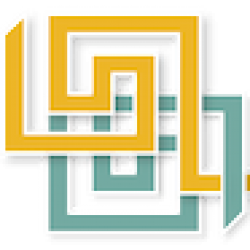Why does archaeology need ARIADNE?
In their research, archaeologists examine huge quantities of objects, some of which have already been discovered by others and are kept in museums and archives, but many are newly found in excavations. The “treasures” archaeologists discover usually have little or no monetary value – of course with few notable exceptions – as their value is in the knowledge they bring about our history. Archaeology interprets the remains discovered in excavations, looks at their relationships and infers new information about the human past. An archaeological excavation, therefore, produces a large number of documents that report in the most detailed way what every layer of excavation contained and how finds and other remains relate to each other.
Such documents consist of texts, (i.e. notes written by the researchers to describe what was found); images and drawings of the relevant appearance of the excavation at each stage of its execution; inventories of what was found in each layer; and much more, for example plans of the location (the archaeological site) showing where the various remains were found within the same site, for example an ancient village. An archaeological investigation thus turns the remains of the past into a complex series of descriptions, in a way that resembles what we usually do when we take photos and or notes in a diary during a holiday to convey our experience to friends and relatives who stayed home, as well as to revive our memories of the vacation.
Every archaeological investigation starts with a research question that is resolved, at least in part, by what is discovered during the research activity. Sometimes the question is simply “what do we have here?”: this happens when construction work must be carried out, for example the construction of a motorway, a new railway or a new house, and it is necessary to ascertain that no important information is destroyed by the works. In most countries, the result is an unpublished fieldwork report, which is often held in local authority offices and is difficult to find.
In conclusion, both planned excavations dictated by specific research questions and emergency excavations producing casual discoveries during public works generate a large number of documents. Such documents are summarised in a final excavation report that focuses on the specific purpose and ignores any archaeological information not directly impacted by the work. Nevertheless, this documentation also contains information about anything else found during the investigation, which may be usefully reused – if made available – by other researchers with a different purpose.
Today, most archaeological data are digital and it is more frequently being made available online, making it easer for other researchers to get important information from the work of colleagues, including data that was not included in final synthetic reports. The importance of these unpublished reports, commonly known as “grey literature” has been recognized, and they too have increasingly been made available online in many European countries. In some cases, this activity is performed by governmental offices, but the documents can also be found in subject-specific archives and repositories around the world, most notably the ADS (Archaeology Data Serviceat the University of York) in the UK, and the Digital Antiquityinitiative in the USA. These repositories not only disseminate new reports, but also work to save archaeological grey literature from destruction or from being forgotten in paper folders, on floppy disks, CD-ROMs or on hard drives left on an office shelf.
In 2012 there were many different repositories containing archaeological documentation in digital formats scattered around Europe, several of which were accessible online. However, a researcher wishing to find specific information could not perform a single query: the same search had to be repeated in each repository having different systems and data organisation, not to mention different languages. Furthermore, just because something is stored in an open online format does not necessarily mean it is easy to find: an effective search system needed to be implemented. Google does not help, as it mixes links to different topics that only have words in common. For example, searching for “axe” gives nearly 300 million hits – which is not really helpful for an archaeologist – mixing shaving and cosmetic products, modern steel tools, games and even software. It is very difficult to find the data about archaeologically relevant objects made by humans for millennia to harvest timber, as a weapon or as a ceremonial symbol.
This was the challenge for ARIADNE: to acknowledge that plenty of useful information is still stored, unused, in archaeological documentation; to make that information more accessible through the available technologies; to bring together the owners of such data who are willing to provide it openly to everyone. This, however, resulted in an overload of data, which made it nearly impossible to find the right information, but it highlighted both the problems and the potential. The ARIADNE partnership proposed a solution to address this issue and find a way, using Ariadne’s thread, to exit from this difficult situation.
Discover the ARIADNEplus partners, the solutions they are proposing, and why this is important for citizens.
The ARIADNEplus partnership
The 41 ARIADNEplus partners come from 23 European countries, plus four from outside of Europe.
ARIADNEplus is funded to support researchers; but we believe it will be important and useful also for heritage agencies and managers, and for all citizens.
See which partners come from your country.
The ARIADNEplus Solution
To address the needs of archaeologists, first ARIADNE, and now ARIADNEplus, have designed an efficient solution. The project has created a portal (www.ariadne-infrastructure.eu/portal) with a catalogue of the archaeological datasets available online. This catalogue can be searched by choosing keywords or dates/time periods and/or the place of interest.
The actual data are held by the data owner within the participating institutions. When searching across all the datasets that can be discovered using the ARIADNE portal, the user can access the actual information through a link that points to the local institution. Thus, the catalogue works in way that resembles Google, but it contains only references to archaeological data accessed using concepts developed by archaeologists. The multilingual approach is also very important: ARIADNEplus uses multilingual vocabularies to query with terms in many languages and to search for documents written in different languages.
Moreover, the same portal offers tools to further process the data: for example to display images and 3D models to create a slide show; to analyse texts in order to automatically to create a subject index or to make annotations, i.e. adding personal notes on top of work previously carried out; to display thematic maps (for example: all bronze age sites in a region); and so on.
Thus, researchers will not only be able to find the information they are looking for, but to also elaborate on it, combining various sources according to the researcher’s purpose, and thus obtain new research results.
Why is ARIADNEplus important for citizens?
Citizens get important indirect advantages from the ARIADNEplus activity, which improves the effectiveness of archaeological research, re-using the results of previous research work for new investigations. Moreover, it avoids duplication of work and produces savings. ARIADNEplus fosters the re-use of data: most of the research produced was paid with public funds, so the results are owned by tax-payers who funded them and must be shared with other researchers.
Although setting up ARIADNEplus required substantial funding (provided by the EU, who acknowledged its importance), maintaining it in the future will be relatively inexpensive, as the cost will be shared by all project partners.
Apart from its usefulness for research, ARIADNEplus may play a significant role for the management and conservation of archaeological heritage, supporting the agencies in charge of it. Cultural heritage is a key identity factor and also an economic resource, as it is important for cultural tourism, whose revenues account for 40% of all tourism.
Individuals interested in history and archaeology are welcome to use the ARIADNEplus system: even if it is designed for professional use, access is open to anybody. Its easy to use interface allows you to discover, for example, what happened in your local community in the past.

